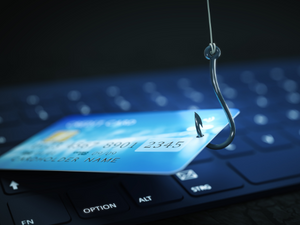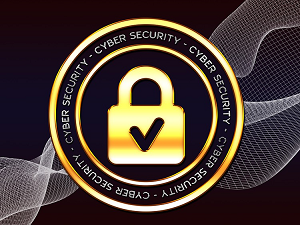Staying Ahead of Evolving Phishing Threats: A Business Owner’s Guide
 In today's digital landscape, where innovation drives both businesses and cybercriminals, staying secure is more crucial than ever. While retaining customers and observing market trends is essential, protecting your business from sophisticated phishing attacks should be a top priority. Cybercriminals no longer rely on basic tricks. They're evolving, exploiting weak security systems, and using advanced tactics like AI to bypass traditional defenses.
In today's digital landscape, where innovation drives both businesses and cybercriminals, staying secure is more crucial than ever. While retaining customers and observing market trends is essential, protecting your business from sophisticated phishing attacks should be a top priority. Cybercriminals no longer rely on basic tricks. They're evolving, exploiting weak security systems, and using advanced tactics like AI to bypass traditional defenses.
This blog post aims to answer these top phishing frequently asked questions (FAQs)
1. How can I spot a phishing email if AI-generated messages look legitimate?
2. How can multi-factor authentication protect my business from phishing attacks?
3. What should I do if my business falls victim to a phishing attack?
If you're a business owner, CEO, or decision-maker, understanding and mitigating these phishing threats is critical for safeguarding your business. Let’s break down the threats, how they’ve evolved, and the best practices for staying one step ahead.
Traditional Phishing Threats: What You Need to Know
Phishing attacks have been around for years, typically targeting businesses through fraudulent emails or messages that appear legitimate. These messages often impersonate well-known companies and aim to extract sensitive information such as credit card details, login credentials, or other personal data. Once hackers get this information, they may:
- Hold your data for ransom
- Steal funds directly
- Attempt identity theft to tarnish your company’s reputation
Common Signs of Traditional Phishing Attempts:
Business owners used to teach employees to identify phishing through certain red flags, such as:
- Emails that demand immediate action
- Suspicious attachments
- Emails from unfamiliar senders
While these methods still help, phishing attacks have evolved significantly, requiring new strategies and solutions.
 The Evolution of Phishing: Why Traditional Defenses Are No Longer Enough
The Evolution of Phishing: Why Traditional Defenses Are No Longer Enough
Technology advancements, particularly in artificial intelligence and machine learning, have changed the game for cybercriminals. Hackers are now using tools like ChatGPT to craft highly realistic messages and scripts, making phishing attempts more convincing than ever before.
AI-Powered Phishing: The Rise of Smarter Attacks
Chatbots, like OpenAI’s ChatGPT, were originally designed to assist businesses by automating customer interactions and content creation. However, cybercriminals have hijacked this technology to generate sophisticated phishing emails and phone scripts. These AI-generated messages are nearly indistinguishable from legitimate communication, increasing the risk of falling for a scam.
The Danger of Quishing: QR Codes as a New Phishing Vector
Quishing is another emerging threat. Unlike traditional phishing, which relies on fraudulent links, quishing uses QR codes to direct users to fake login pages or other malicious sites. What makes quishing particularly dangerous is that these QR codes can appear anywhere—emails, social media posts, printed materials, or even physical locations like restaurants. They appear innocuous, but one scan can compromise your business.
Social Engineering Tactics: Manipulating Human Psychology
Phishing attackers increasingly rely on social engineering techniques to manipulate victims. These scams use urgency and fear to trick employees into divulging sensitive information. For instance, an email may claim that immediate action is needed to recover stolen data, leading to a hasty and harmful response.
Staying Ahead of Phishing Attacks: Modern Solutions for Businesses
As phishing tactics evolve, so must your defense strategies. Implementing a robust, proactive cybersecurity strategy can help safeguard your business, employees, and clients from phishing attempts. One of the most effective strategies for businesses is adopting a Zero-Trust Security Architecture.
 What Is Zero-Trust Security?
What Is Zero-Trust Security?
Zero-trust assumes that every entity, whether inside or outside the network, is a potential threat. Instead of automatically trusting employees, customers, or devices, this architecture continuously verifies the identity of users, even after they've logged in. It’s an essential step in preventing unauthorized access.
Key features of a Zero-Trust approach include:
- Identity Verification: Every access request requires verification, ensuring hackers can’t exploit stolen credentials.
- Network Segmentation: Even if a breach occurs in one area, segmentation prevents the hacker from accessing the entire network.
- Role-Based Access: Employees can only access the information relevant to their roles, limiting the scope of any potential breach.
Multi-Factor Authentication (MFA): A Must-Have for Your Business
Implementing multi-factor authentication is a simple yet highly effective way to bolster your company’s security. With MFA, employees must provide two or more verification factors—such as a password and a temporary code sent to their phone—before gaining access. Even if a hacker has a password, MFA acts as an additional barrier.
Leveraging AI-Powered Filters and Threat Intelligence
As hackers increasingly use AI to develop more sophisticated phishing attacks, businesses can fight fire with fire by incorporating AI-powered filters and threat intelligence into their security systems. These tools use machine learning to detect abnormal behavior, scan emails for potential threats, and automatically flag suspicious messages before they reach employees.
 Employee Awareness and Training: Your First Line of Defense
Employee Awareness and Training: Your First Line of Defense
Even with the best technology in place, human error remains a significant vulnerability. Investing in regular training for employees ensures they are up to date on the latest phishing tactics and know how to respond to suspicious emails or messages. Consider using interactive modules, quizzes, and phishing simulations to reinforce this knowledge.
Best Practices for Employee Awareness:
- Regularly update training to reflect current threats
- Use phishing simulations to help employees spot red flags
- Encourage a culture of caution—report suspicious activity without hesitation
Let's Recap: Staying Secure in an Evolving Digital World
Phishing will continue to be a prevalent threat as long as businesses operate in the digital world. However, by adopting a zero-trust approach, implementing multi-factor authentication, leveraging AI-powered tools, and maintaining a high level of employee awareness, you can significantly reduce the risk of falling victim to these attacks. Protect your business today by staying ahead of the evolving phishing landscape.
Top Three Phishing FAQs Answered
1. How can I spot a phishing email if AI-generated messages look legitimate?
Look for subtle signs like unusual sender addresses, unexpected requests for sensitive information, and a sense of urgency in the message. AI-generated phishing emails may look polished, but they often contain small inconsistencies. Train employees to verify messages before clicking on links or downloading attachments.2. How can multi-factor authentication protect my business from phishing attacks?
Multi-factor authentication (MFA) adds an extra layer of security beyond just a password. Even if a hacker obtains your password, MFA requires an additional verification step, such as a code sent to your phone, making it much harder for unauthorized individuals to access your systems.3. What should I do if my business falls victim to a phishing attack?
First, contain the damage by immediately disconnecting compromised systems from the network. Notify your IT team or managed services provider to assess the breach, recover lost data, and restore your systems. Afterward, conduct a thorough review of your security protocols to prevent future attacks.By proactively addressing these issues and educating your team, you’ll ensure your business stays secure against phishing threats. Stay vigilant, stay protected.
